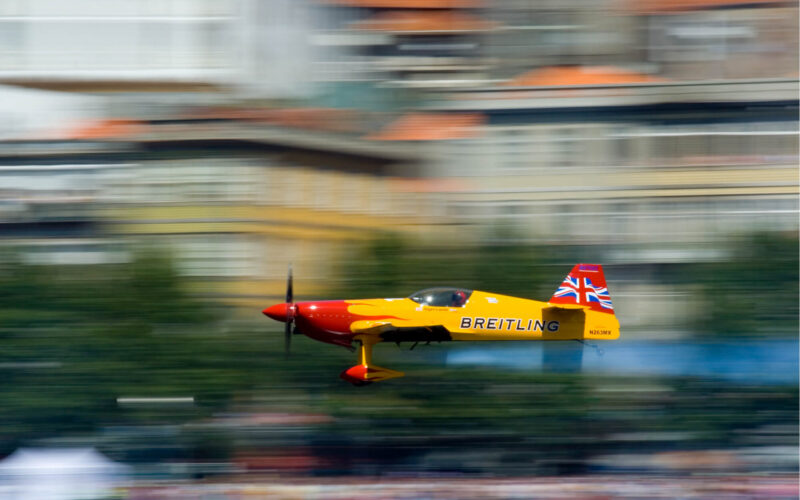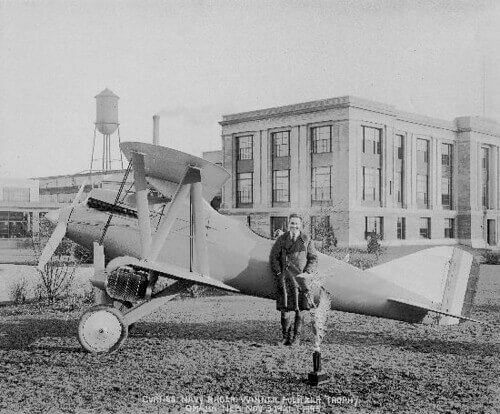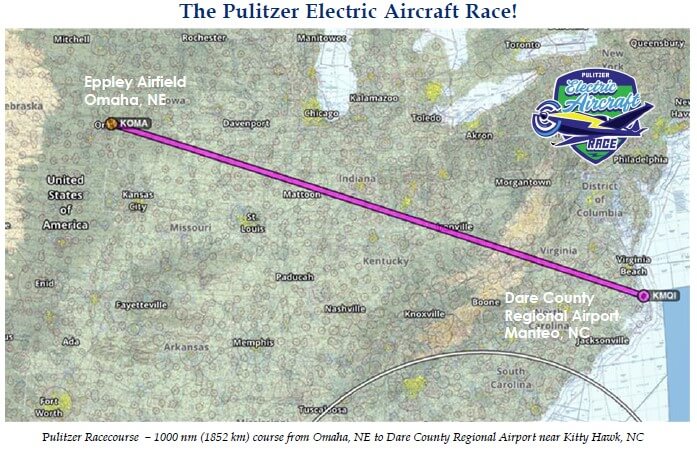Could electric air races be a way to drive forward the development of new aviation technologies and help make flying more sustainable? AeroTime speaks to Scott Neumann, director of the Pulitzer Electric Aircraft Race, to find out more.
Air races used to be popular way back in the early part of the 20th century and the early days of flying. Now 2023 could see a new chapter in the history of air races with electric aircraft set to take center stage.
Let’s first go back 100 years. The first Pulitzer race took place in Long Island, New York in 1920. It involved 36 aircraft racing four laps of a triangular course, cheered on by 40,000 spectators. Omaha was the venue for the second Pulitzer race in 1921. In 1922, the third Pulitzer race was part of the National Aero Congress and was the sixth race of the day. An impressive 75,000 people turned up to watch. But it was the 1923 Pulitzer Trophy Race in St. Louis that saw the largest crowds. More than 500,000 people attended the three-day meet, known as the National Air Race. However, interest was waning – only four aircraft entered the 1924 edition of the Pulitzer Air Race, and the crowd was down to 50,000. The final Pulitzer Air Race took place in 1925, once again in Long Island.
Now the National Aeronautic Association (NAA) is planning to bring the Pulitzer trophy out of its resting place in the Smithsonian Museum and revive the race, but with a modern twist by focusing on sustainability and encouraging STEM uptake.
“We thought this would be a good opportunity, because electric aviation is interesting,” Neumann tells AeroTime. “Sustainability is a big trend in aviation right now, we have this trophy, which has some history behind it, and we thought it would be great if we could do a race that could recognise all those neat things.”
The NAA is planning the multi-day, cross-country race for May 22-25, 2023. Unlike the original Pulitzer races, it won’t be laps of a triangular course, but a 1000 nautical mile (1,852 km) course from Eppley Airfield Omaha, Nebraska (OME) to Dare County Regional Airport (MEO) near Kitty Hawk, NC.
The locations have historical significance: Omaha was the location of the second Pulitzer race in 1921 and Kitty Hawk is of course where the Wright Brothers made the first airplane flight on December 17, 1903.
Bert Acosta with the Pulitzer Trophy in 1921, credit: San Diego Air and Space Museum Archive
Diversity of design
The race is open to all types of electric aircraft, Neumann explains, saying they hope to see a wide range of different designs.
“Everybody knows what a good jet airliner looks like. But here we are at the beginning of the electric age, and nobody knows what a good electric airplane should look like.”
The race is therefore open to everything from fixed-wing aircraft to rotorcraft, as well as multirotor Advanced Air Mobility (AAM) vehicles. Whether it’s one engine or 10 engines, Neumann is hoping to see them all.
“It can be a helicopter, it can be fixed-wing, it can be a multi-rotor. If it’s an aircraft that flies and it has a zero-emission, electric propulsion, then it can be in the race,” Neumann says.
That means batteries, solar or solar augmented, hydrogen fuel cells, but no hydrocarbons, he says.
“When you have a new propulsion technology, it opens up the design space so much,” says Neumann, who has worked as a test pilot himself. “There’s all sorts of interesting things you can do with it. By leaving the race pretty open ended, we’re hoping to see diversity of design.”
Neumann hopes the race can help drive innovation in electric aircraft technology. He highlights that over the course of the original six Pulitzer races, the winning speed increased from 156 mph to 249 mph.
“They added almost 100 miles an hour to the speed of airplanes in those few years. That’s the value that you start to see in competition. I think it ups the ante a little bit and makes it interesting when you get that spirit of competition.”
Neumann also highlights that, along with being better for the environment, electric technology can be cheaper to operate because it involves fewer moving parts and maintenance.
Formula 1 in the air?
The Pulitzer Electric Aircraft Race isn’t the only electric race planned for 2023. The Air Race E is also hoping to launch in 2023, after being delayed due to the pandemic. Unlike the Pulitzer, it will be a head-to-head race, involving eight planes racing close together around an oval circuit.
The organizers promise a “quick, action-packed race”, predicting the aircraft will reach speeds of up to 400 km/hour around the 1.5-kilometer course. Indeed, one all-electric race aircraft, a modified Cassutt IIIM from the Nordic Air Racing Team, reached a full power cruise of 180 knots (333 km/h) during a January test flight.
Aircraft manufacturer Airbus is one of the founding partners of Air Race E and hopes that along with being a “thrilling spectacle”, the race will drive the development of cleaner, faster and more technologically advanced electric engines.
“Some of the insights gained from the competition and more especially the lessons learned from making fly propulsive electrical systems will be key assets for Airbus solutions from urban air mobility to, eventually, commercial aircraft,” the company states.
The Air Race E is also drawing on the experience and challenges that the automotive industry has faced as it has developed electric technology.
“In this case, flying aircraft using tried and tested electric technologies from the automotive industry is proof of that and is an approach we fully support as part of our electrification journey,” Karim Mokaddem, Airbus Electrification Fast Track Leader, stated in a January 2022 press release.
Real life scenarios
Back to the Pulitzer concept, and Neumann says they wanted to stage a cross-country race, to show how electric aircraft could fit into real-life settings.
“We wanted to be able to show real airplanes in real airspace, landing and taking off from real airports. And so, we’ve structured ours as a cross country race,” he said. “We think that will help in terms of public acceptance. We want to show these are airplanes that are capable of going from point A to point B, that they can carry people, serve as training aircraft,” he said.
While the Air Race E might provide more immediate excitement, Neumann says the Pulitzer Race will offer intrigue and strategy and that the first aircraft to arrive in Kitty Hawk might not necessarily be the winner.
The race will be scored based on the actual flight time divided by 1000 (the straight line distance of the course). So even if it covers more distance to take in more stops, they can still win if they spend less time in the air.
The planned course, credit: NAA
The route has been selected so that it offers an abundance of airports for teams to fly into as they pick their way along the route. Those aircraft with longer ranges may be able to pick airports that are more directly along the route, while faster planes with shorter ranges may need to make more stops and go a bit further out of the way. “But if you can go really fast between them, you can still win,” Neumann explains.
“It means battery capacity becomes important, range becomes important. Are you able to quickly charge or have a fresh set of battery packs ready to go? I think the strategies will be interesting to see,” Neumann says.
What about spectators? Neumann says the Pulitzer race has done a deal with flight tracking website FlightAware, which means people will be able to follow the teams, see who’s going where and how fast.
“We hope to build some excitement that way over the four days,” Neumann said.
Safety considerations?
Along with lots of airports along the way, the route has also been selected thanks to the terrain – it’s flat, offering more options should anyone need an emergency landing.
The race is also being restricted to 25 teams, to keep the numbers manageable for the airports and organizers. The teams will be asked for details of their technology, such as battery systems, to allow first responders to react accordingly, although hopefully they won’t be needed!
What of future races? Neumann says there is potential for the rules to be adapted as the technology develops, maybe splitting it into separate categories for fixed-wing or eVTOL, for example.
“I hope people will be interested in this,” he concludes. “People seem to like airplanes no matter what you do, but I think just some of the novelty of electric airplanes will be interesting.”



